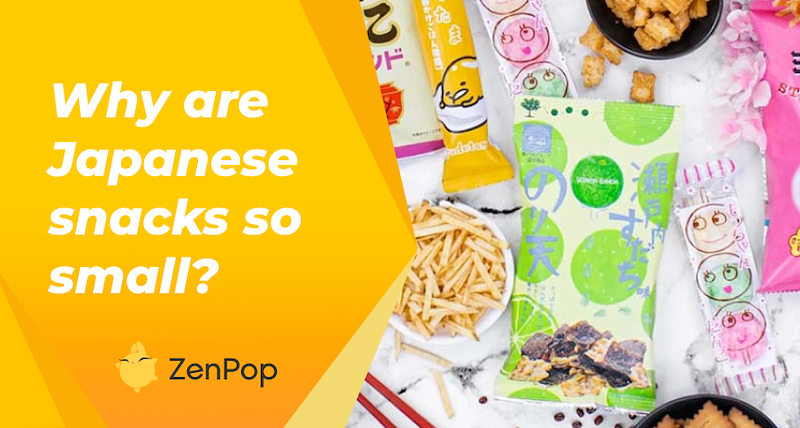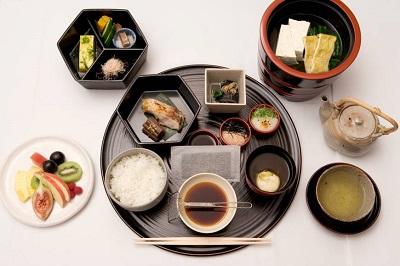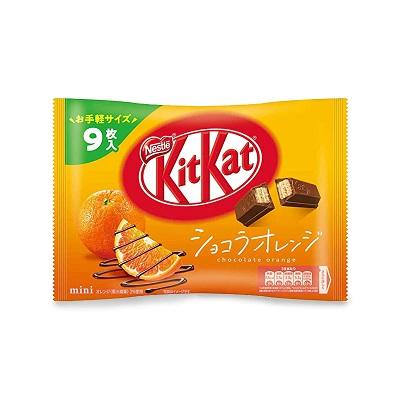
</title><meta name="robots" content="noindex"> Why are Japanese snacks so small?
Japanese snacks have captivated snack lovers worldwide with their unique flavors and textures. You will find flavor combinations in Japan that don’t exist anywhere else. However, one characteristic that often surprises newcomers is their size—Japanese snacks tend to be notably smaller compared to their Western counterparts. If you've ever wondered why Japanese snacks are so petite, you're not alone. In this article, we'll delve into the intriguing reasons behind the bite-sized nature of these treats and explore the cultural factors that contribute to their small stature.
Do Japanese Eat Smaller Portions?

Yes and no. People in Japan serve smaller portions of food in one bowl, but there is usually a main dish and many side dishes. You can tell that the size of their food bowls is small because you can hold them in one palm and eat with chopsticks with the other. Sometimes, there would be rice as the main dish and side dishes like proteins, soups, and vegetables that would build up to a large portion. Other times, there’s only one or two side dishes, so the portion is, in fact, small.
In Western countries, food is usually served in big portions on one plate, so it’s easy to conclude that Japanese meals are smaller, but that is not always the case. However, while Western meals pack on a lot of carbs as the star of the meal, Japanese meals are more balanced with diverse side dishes and a smaller portion of carbs as the main dish.
Why Is Japanese Food So Small?
There are cultural and practical reasons why Japanese food is small. For one, Japanese culture encourages portion control as a means of promoting moderation and mindful eating. Smaller servings help prevent overindulgence and contribute to healthier eating habits. In the popular book titled “IKIGAI,” the author writes about how Japanese people will only eat until they are 80% full; this kind of mindset is why they serve their meals in small portions.
Additionally, restaurants in Japan actually serve appropriate food portions that should be enough for one person. In Western countries, food is served in such large portions that many people end up packing and taking it home because they can’t finish it in one sitting. Culinary artistry also plays a significant role in small food portions. Japanese chefs take pride in the art of food presentation, and smaller portions give them a canvas to showcase their skills.
Also, the beauty standard in Asia is very high, and many people worry about being overweight, so they prefer to eat smaller portions. Lastly, sometimes, it’s just how the meal is made. Traditional Japanese dishes, such as sushi, sashimi, and wagashi (traditional sweets), have always been served in smaller portions. The size of a single sushi is different compared to a sandwich, but they are both considered snacks in Japan and other parts of the world.
Are Japanese Snacks Small?
In some cases, yes, Japanese snacks are smaller than their foreign counterparts. Let’s use a practical example. An American Kit Kat has a net weight of around 42g-55g depending on the flavor, which comes up to around 210 calories for just one pack.

Japanese KitKat is labeled mini and has a net weight of only around 12g with 60 - 65 calories. The size is more than half the size of American Kit Kats, but Japan’s Nestle did reduce the size to around 9g and only increased it again due to popular demand. Japanese people are health conscious, so this decision could be because regular-sized Kit Kats would be viewed as too big and unhealthy by the public.

Another example of smaller Japanese snacks is their version of Dorito chips. The American size below weighs 276g, which is the standard size. The Japanese version, on the other hand, only weighs 60g. Of course, there is the larger version of the Japanese Doritos that matches the American size, but that is not the popularised or go-to size Japanese people would usually buy.

Why Japanese Snacks Are Small?

Portion Control and Balance
One of the key reasons for the small size of Japanese snacks is a cultural emphasis on portion control and balance in meals. In Japan, it's common to enjoy a wide variety of dishes during a single meal, each in smaller portions. This practice allows people to savor different flavors without overindulging. Snacks, therefore, follow the same principle, allowing a taste of something delightful without being overly filling.
Exploration of Flavors
Japanese cuisine is renowned for its intricate and diverse flavors. Smaller snacks enable consumers to explore a broader range of tastes and textures in a single sitting. There are around 300 flavors of Kit Kats in Japan, and new versions are always being produced. Small portions allow snack lovers to enjoy many flavors without becoming overwhelmed.
Check out some of Japan's most popular snacks.
Cultural Significance
In Japan, gift-giving is a deeply rooted cultural practice. It is common to exchange beautifully packaged snacks as gifts and smaller portions are favored for this purpose. These gifts, known as "omiyage" or souvenirs, showcase the thoughtfulness and attention to detail that Japanese culture values.
Health Consciousness
Japanese consumers are generally health-conscious, and smaller snacks align with this mindset. Smaller portions encourage moderation and reduce the risk of overfeeding. Additionally, many Japanese snacks incorporate healthier ingredients such as seaweed, rice, and nuts, making them a great choice for those seeking balanced nutrition.
Cultural Heritage
Japanese snacks often reflect the country's rich culinary heritage. Traditional sweets, or "wagashi," have been enjoyed for centuries and are traditionally small in size. This heritage is carried forward in modern snack production, preserving the charm of bite-sized treats.
Social Sharing
Japanese snacks are often shared among friends and family, particularly during gatherings and special occasions. Smaller portions encourage communal snacking and foster social interaction, aligning with Japanese values of togetherness and harmony.
Satisfy your cravings and experience the joy of authentic Japanese snacks. Don't miss out on this delectable adventure by buying a snack pack from Japan– click here to start your ZenPop subscription today!
In conclusion, the small size of Japanese snacks is a fascinating blend of cultural tradition, culinary exploration, and practicality.

